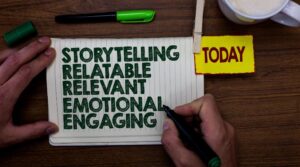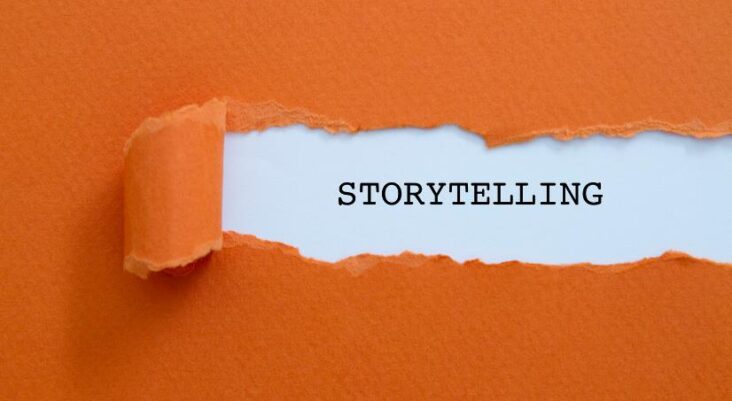Are you one of those people who scroll through their devices endlessly? Immersed in many forms of media, you might have experienced seeing a post that instantly catches your attention. This piques your interest, and you’re now in the rabbit hole of learning more about it. This is what storytelling through design is about.
The realm of design has become fluid over time, transitioning from different shapes and sizes to a tool that shares a narrative through its visual and emotional features. These are generally liked because they appeal to the eyes and tug the peoples’ hearts. This marriage paves the way for creative user interaction that designers can capitalize on.
Creating Emotional Connections Through Storytelling
Empower Design With Stories


It’s human nature to be hooked on stories that resonate with them. Narratives then become a driving force in bridging the gap between products and consumers. Take, for example, an animated web page. Using a web page banks on the aesthetic visual representation with carefully selected words. These make browsing more fun and interactive.
By smoothly combining them, creators cultivate an experience that calls the audience into action.
Craft A Visual Language
Visuals and stories don’t appear out of nothing; in fact, they start by knowing the audience. Their background, values, and expectations are important to know so the design can focus on meeting those. Having a thorough knowledge of the target audience would be a step in the right direction when it comes to your endeavors in communicating the message you hope to convey.
Knowing these would also help in calling the shots when it comes to the color scheme, font styles, and other elements needed. Harnessing these would intentionally create a lasting connection.
Set The Tone With Colors And Typography

The graphics of any digital content are the primary means of contact between the platform and the audience, so they should set the tone for what the audience could expect. High-quality media should always be used, and no counterfeit content should be present.
Choosing the elements that’ll deliver the message effectively to people is what colors and typography are about. The appropriate color palette and the complementing use of fonts would significantly enhance storytelling and design, which invite users to see more.
Setting the tone also involves color psychology. Different shades and hues are picked based on the emotions they bring to the table. For instance, red is usually associated with love and passion, while blue is connotated with serenity and trust. Typography, meanwhile, is responsible for the text’s readability and mood. Its proper use will further emphasize the narrative.
Engage Users Through Interactive Elements
Users taking part in the digital experience is the epitome of storytelling and design. Engagement should never be one-way because interaction between the content and the audience is needed to gain traction. Creating activities such as polls, online games, and gimmicks in the comment section will leave a mark among users as they participate.
Foster Emotional Engagement

Everyone has concerns, desires, and expectations they wish to be met in their digital interactions. Knowing this, aspire to write a narrative addressing these pain points. Beyond the visual aspect, the content should tap into real human experiences and not just creating for the sake of creation. Designers should be deliberate in harnessing this sense of connection so the audience would feel understood and cared for.
Whatever means you use, whether photos, videos, or animated illustrations, see to it that these visuals are heartfelt and portray narratives addressing your audience’s pain points and showcasing relatable feelings to connect emotionally.
Ensure Inclusivity In The Design
Accessibility and inclusion are paramount in storytelling and design so that anything put up on the Internet is utilized by everyone, no matter their abilities, contexts, or backgrounds. Designers should consider the diversity of their target audience, streamlining their content to those with varying needs. Basic examples are screen compatibility regardless of the device, appropriate alt text for different images, and readable fonts. Not only are these obligations of the designers, but these can also be an advantage in the market.
Challenges And Opportunities In Storytelling and Design

Despite the many advantages of storytelling and design, some obstacles still need to be faced as you go along. Appealing to the heart and mind entails using emotionally captivating stories and stating factual claims. If imbalances exist, there’s a risk of being highly emotional or highly logical. This can leave a negative impression on your users.
That said, balance creativity and usability by aligning design elements with the preferences of your audience. Always think outside the box by discovering what’s hot and what’s not when it comes to digital marketing through storytelling and design.
Conclusion
The fusion of storytelling and design has the power to cultivate connections going beyond the here and now. The strategic application of the ideas mentioned in this article could elevate your visual stories while being relevant at the same time. Don’t be limited by the things you’re familiar with already. Instead, broaden your horizons by trying new things.








GIPHY App Key not set. Please check settings